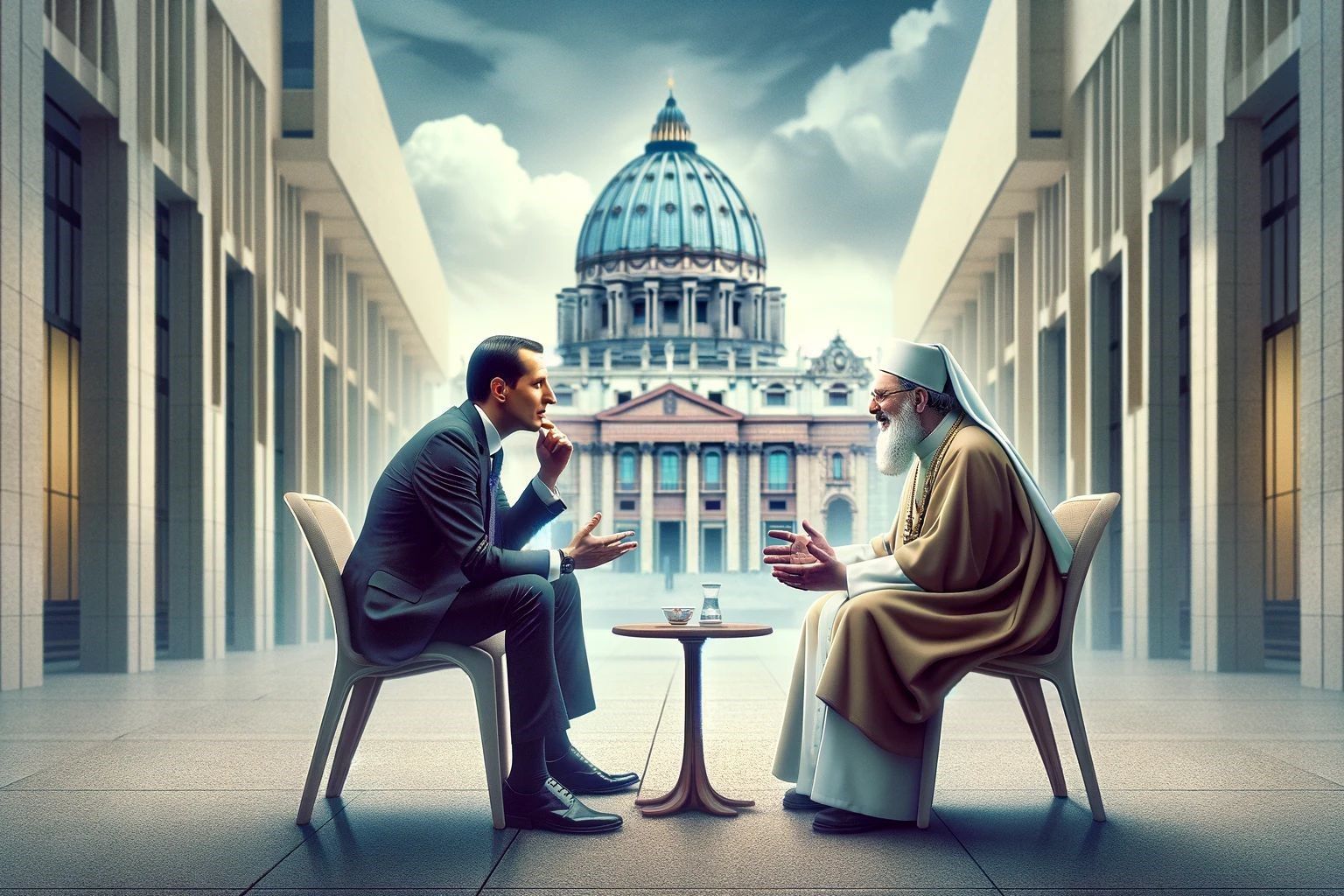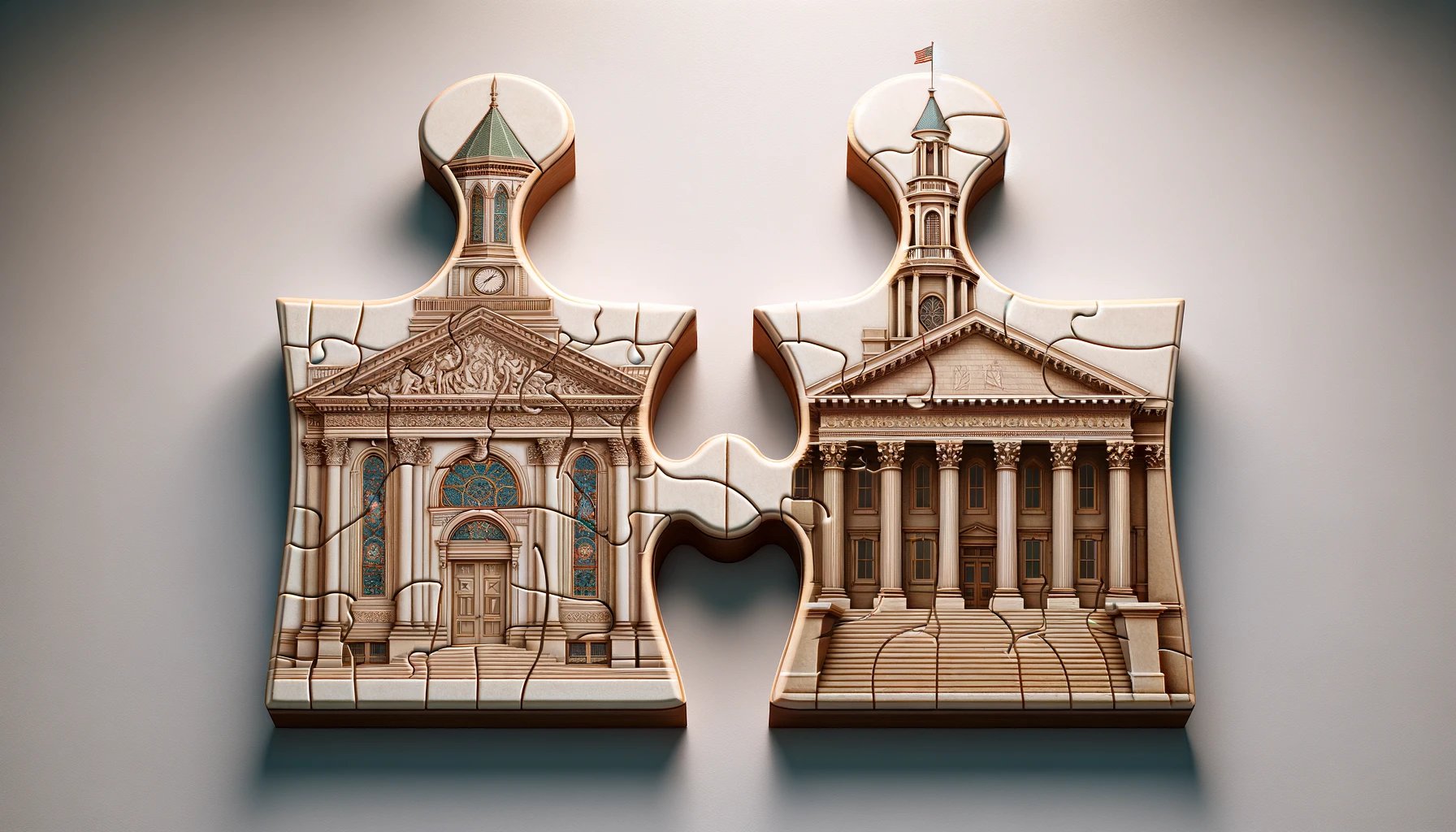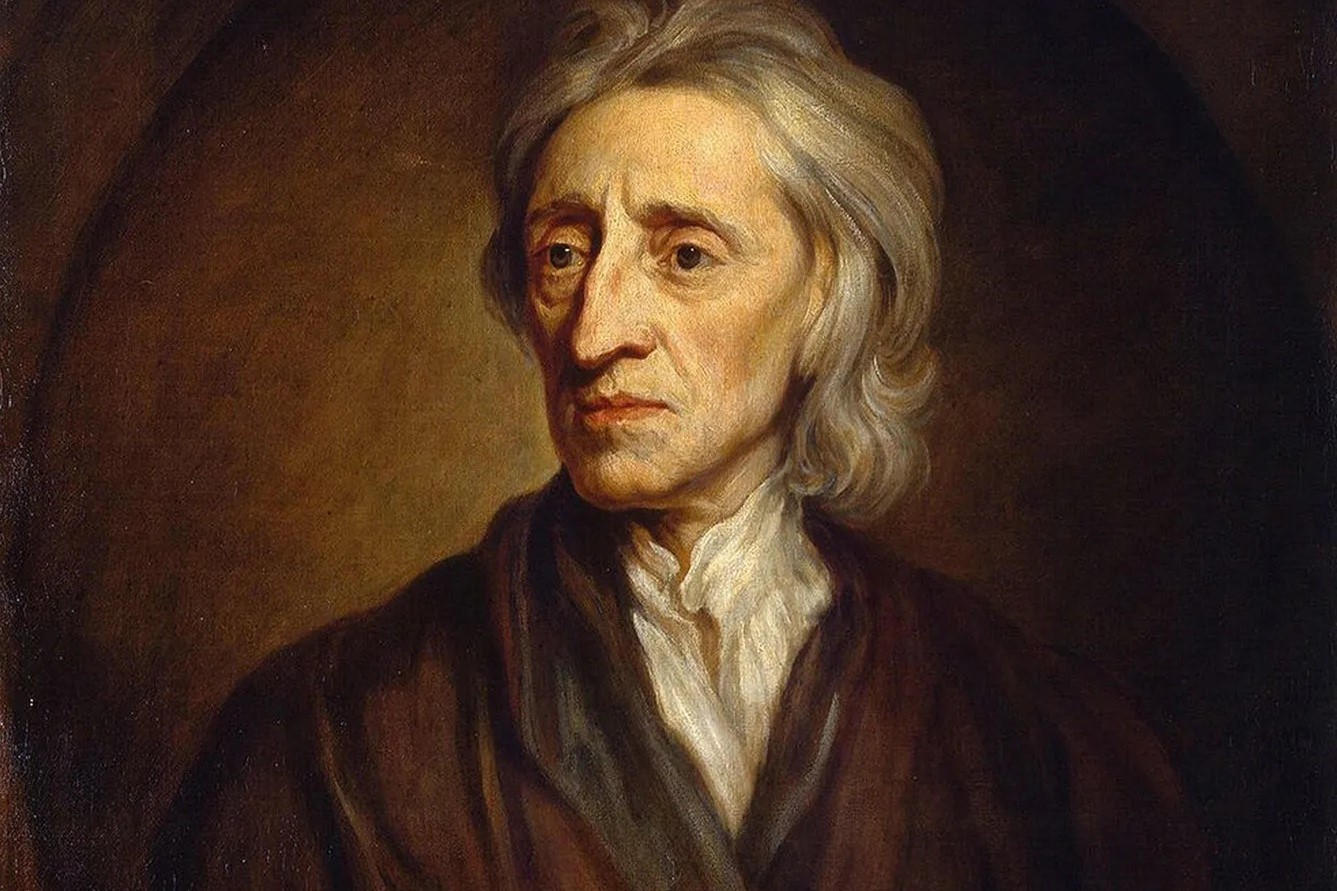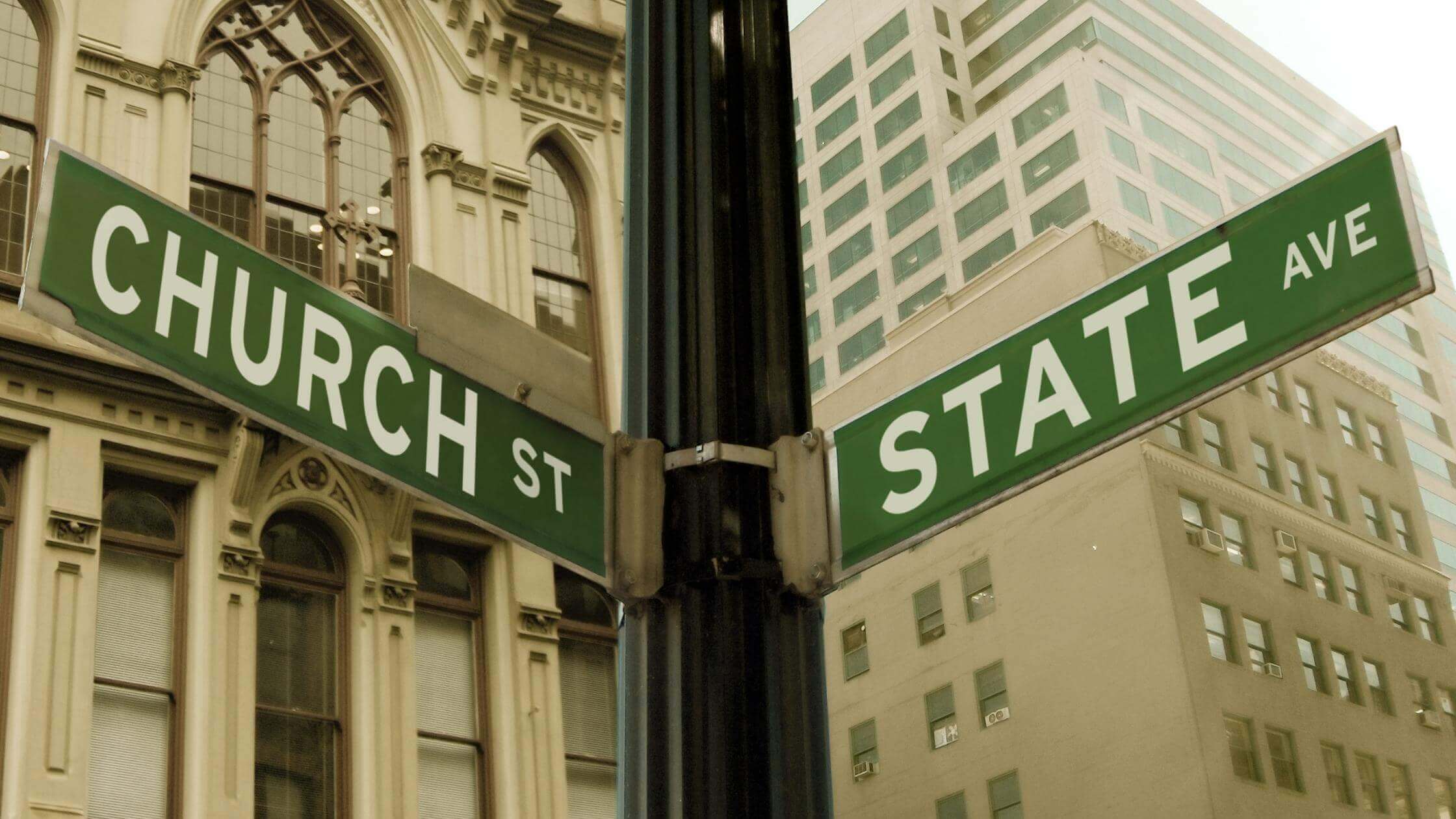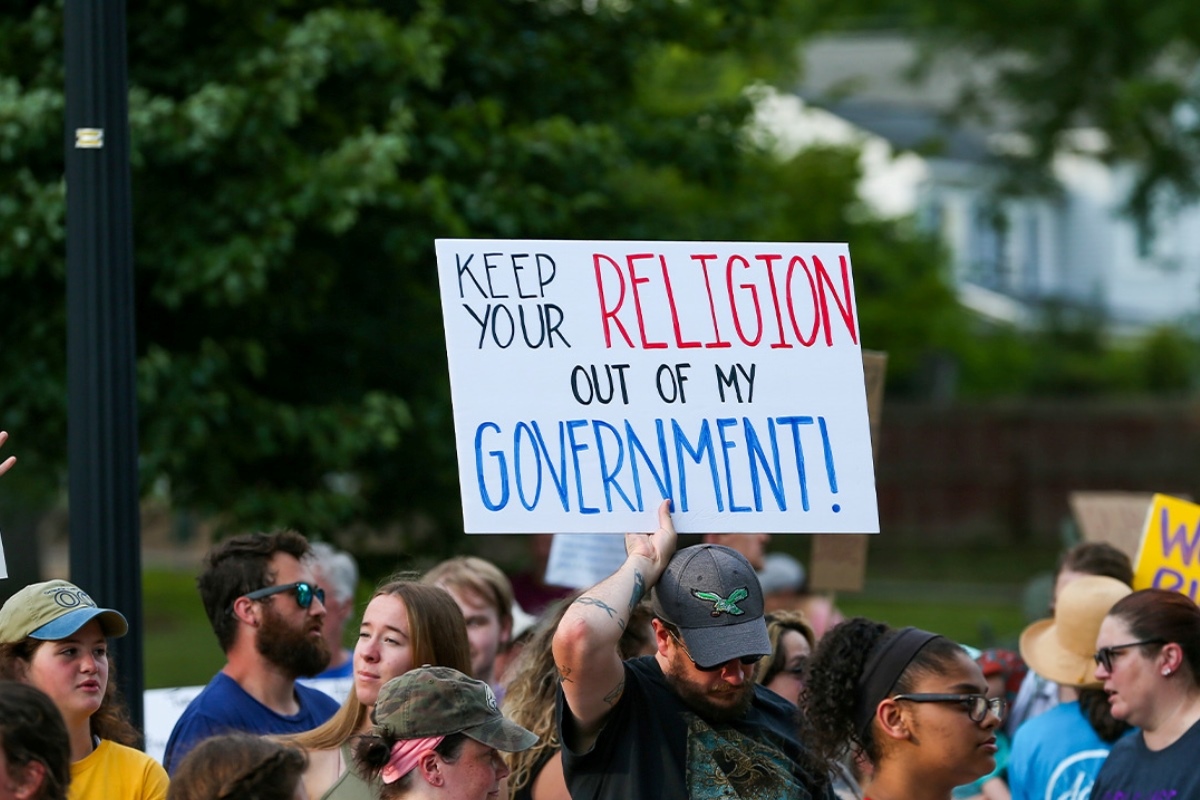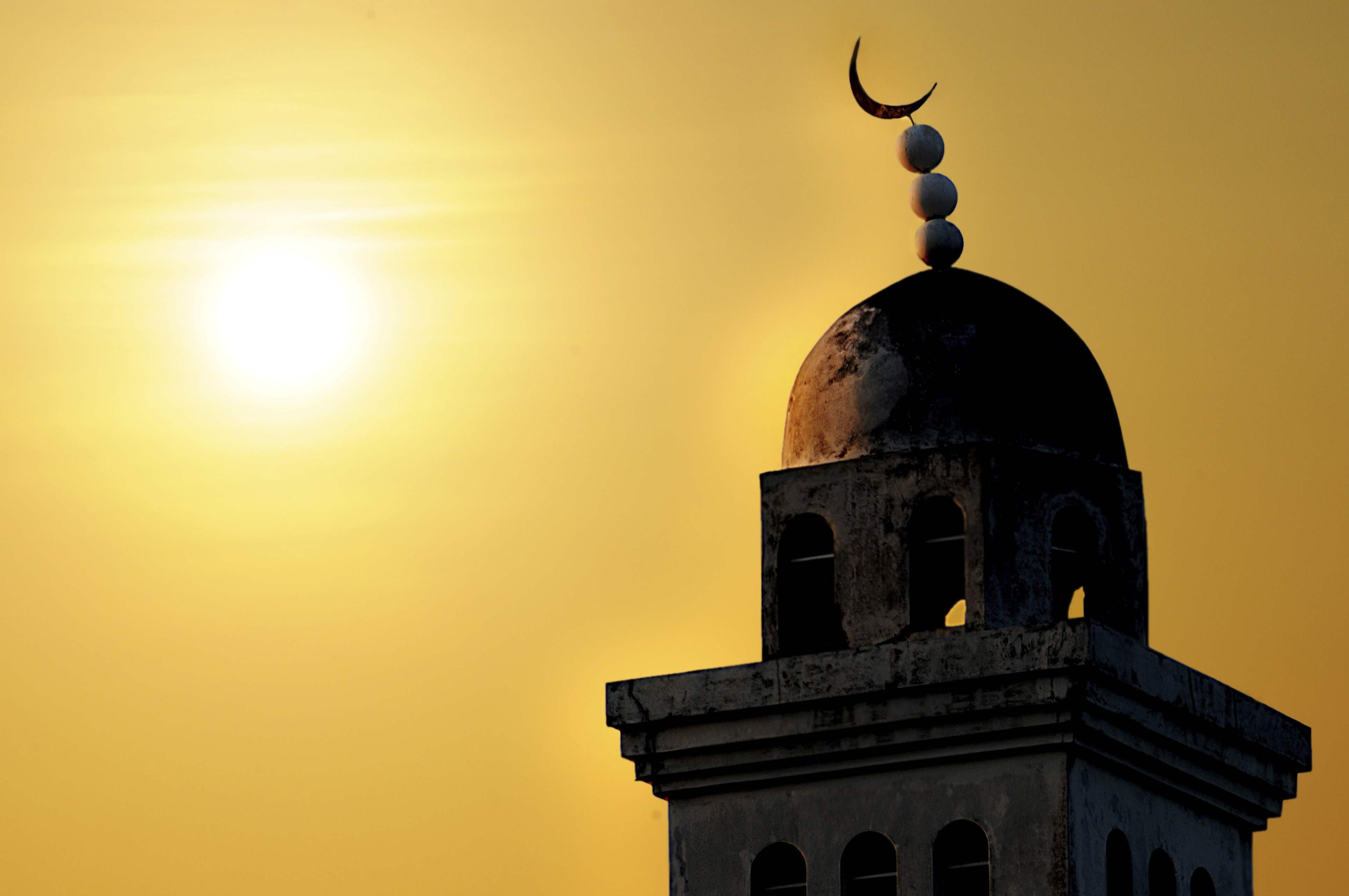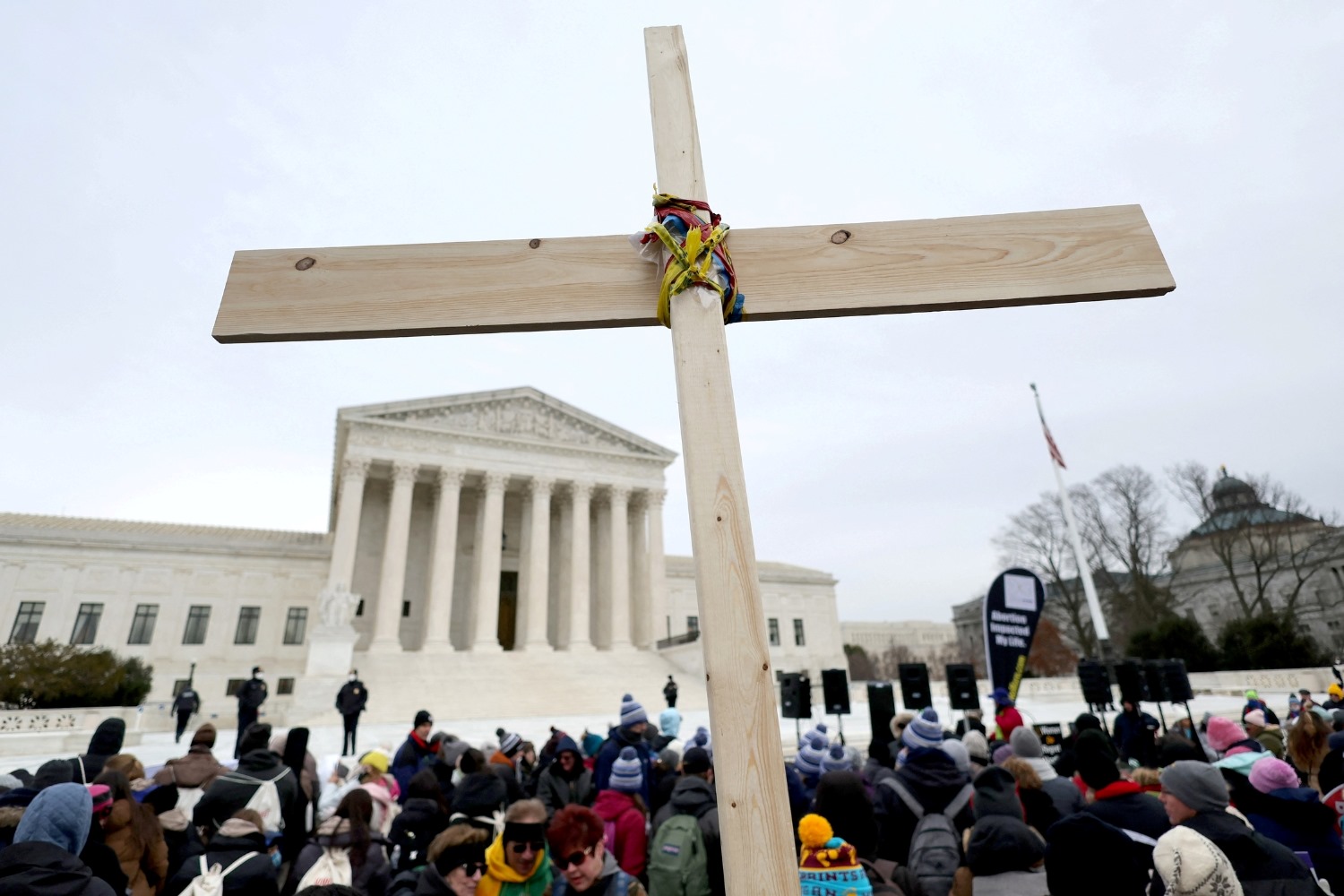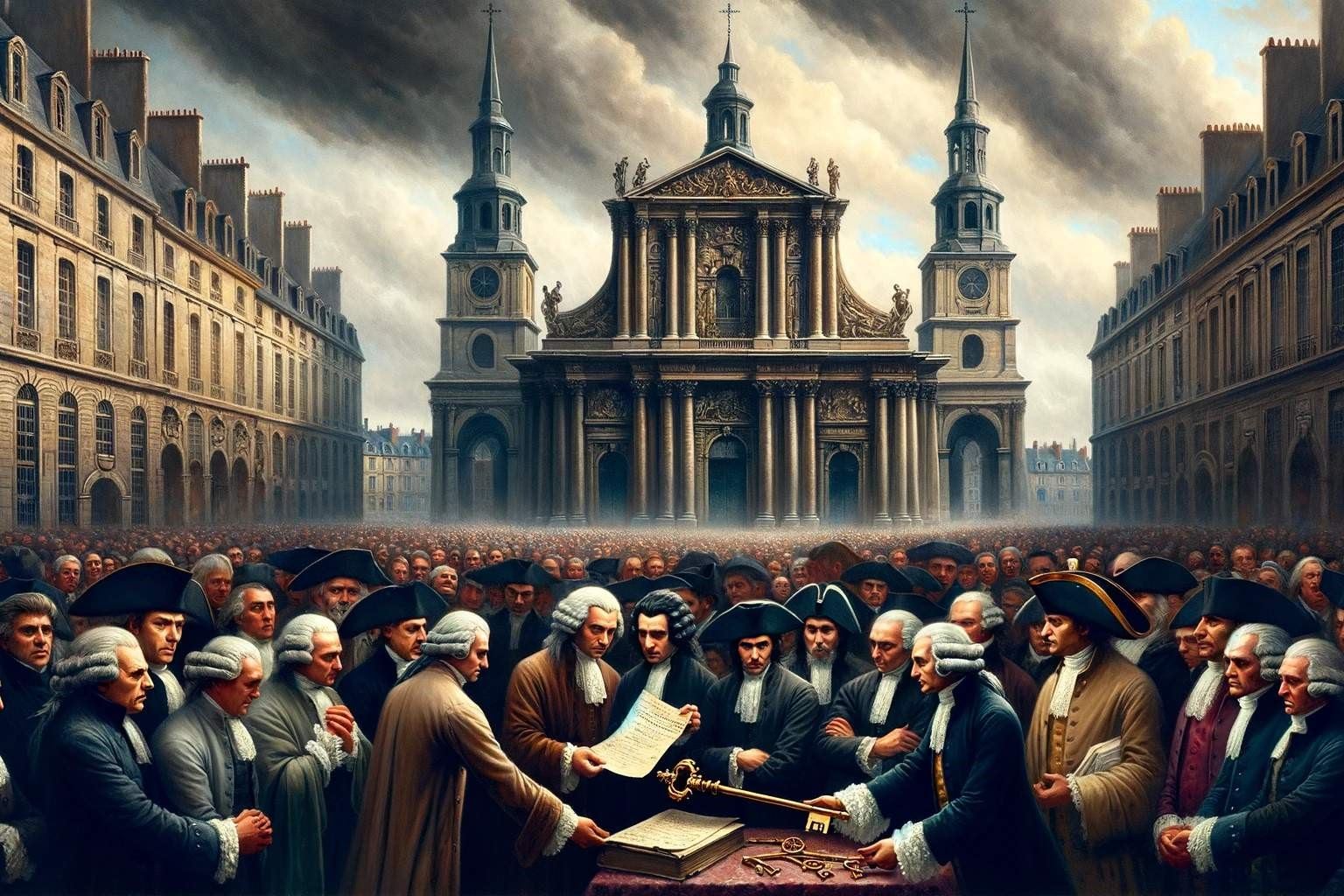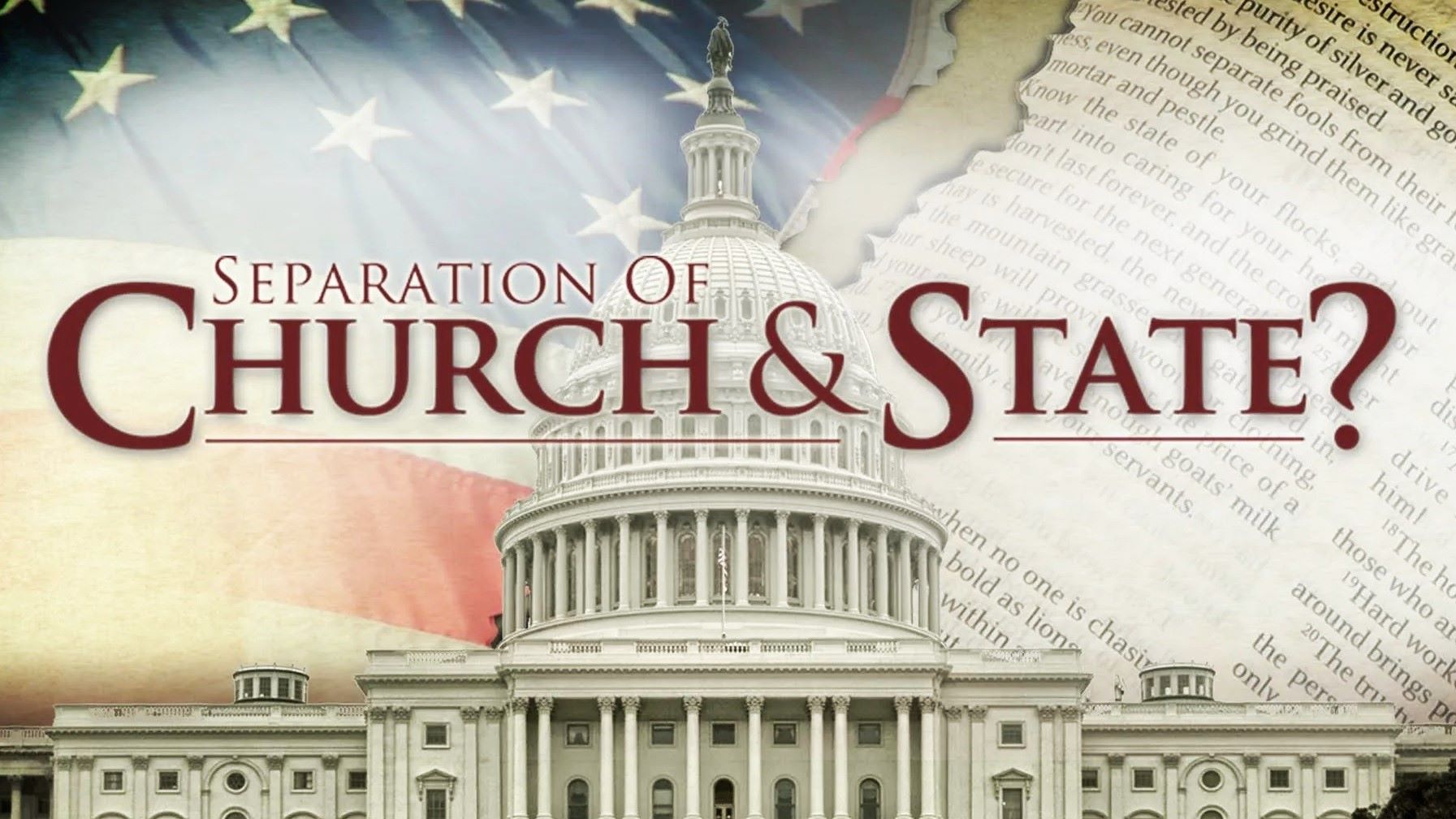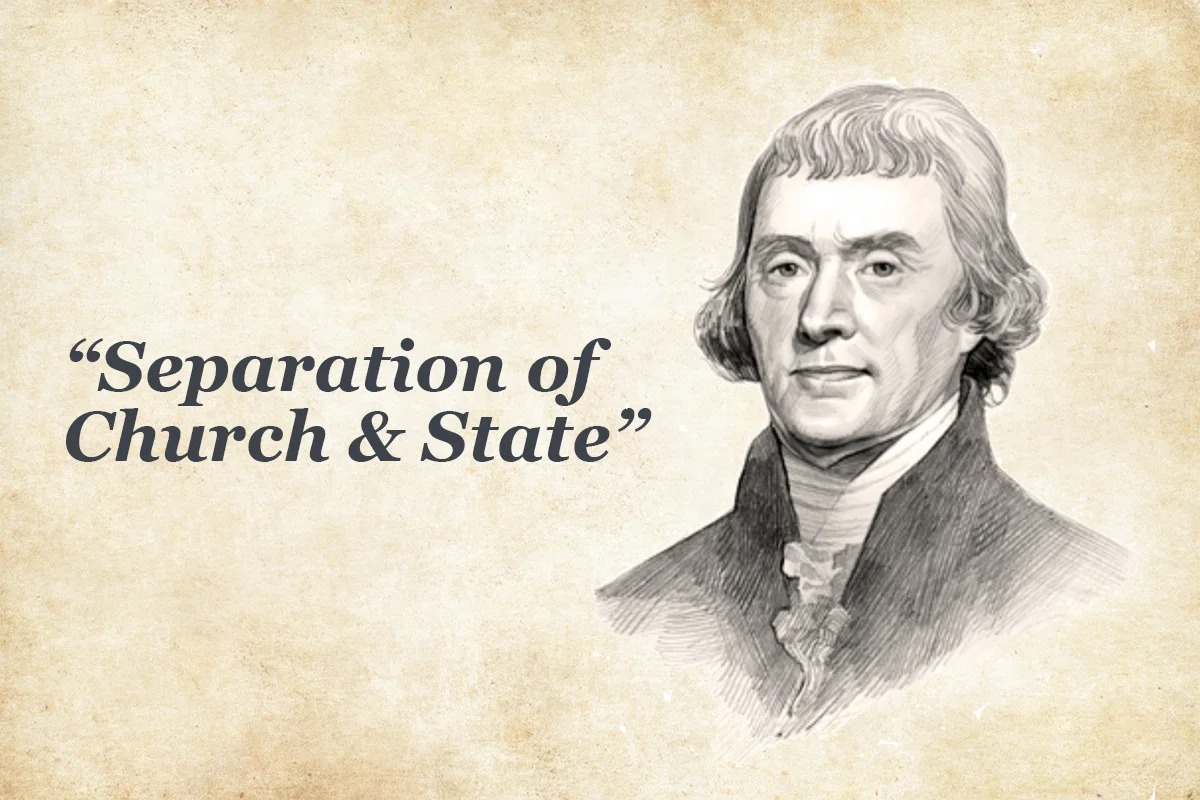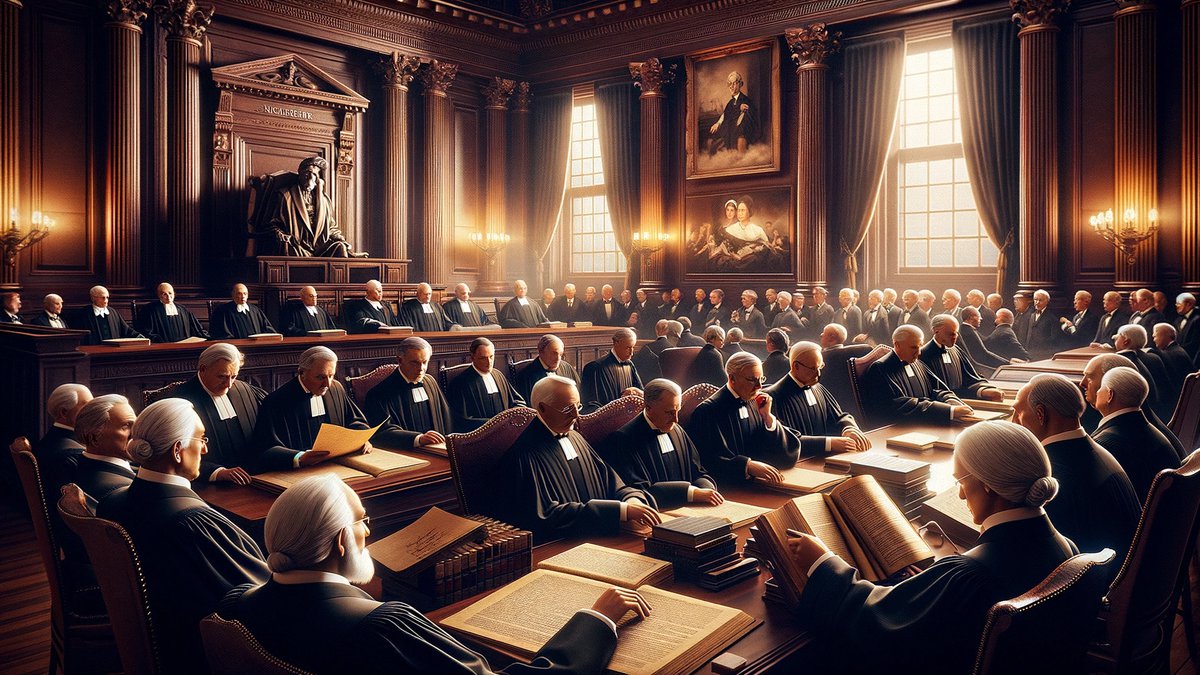Home>Theology and Spirituality>Wall Of Separation Between Church And State Who
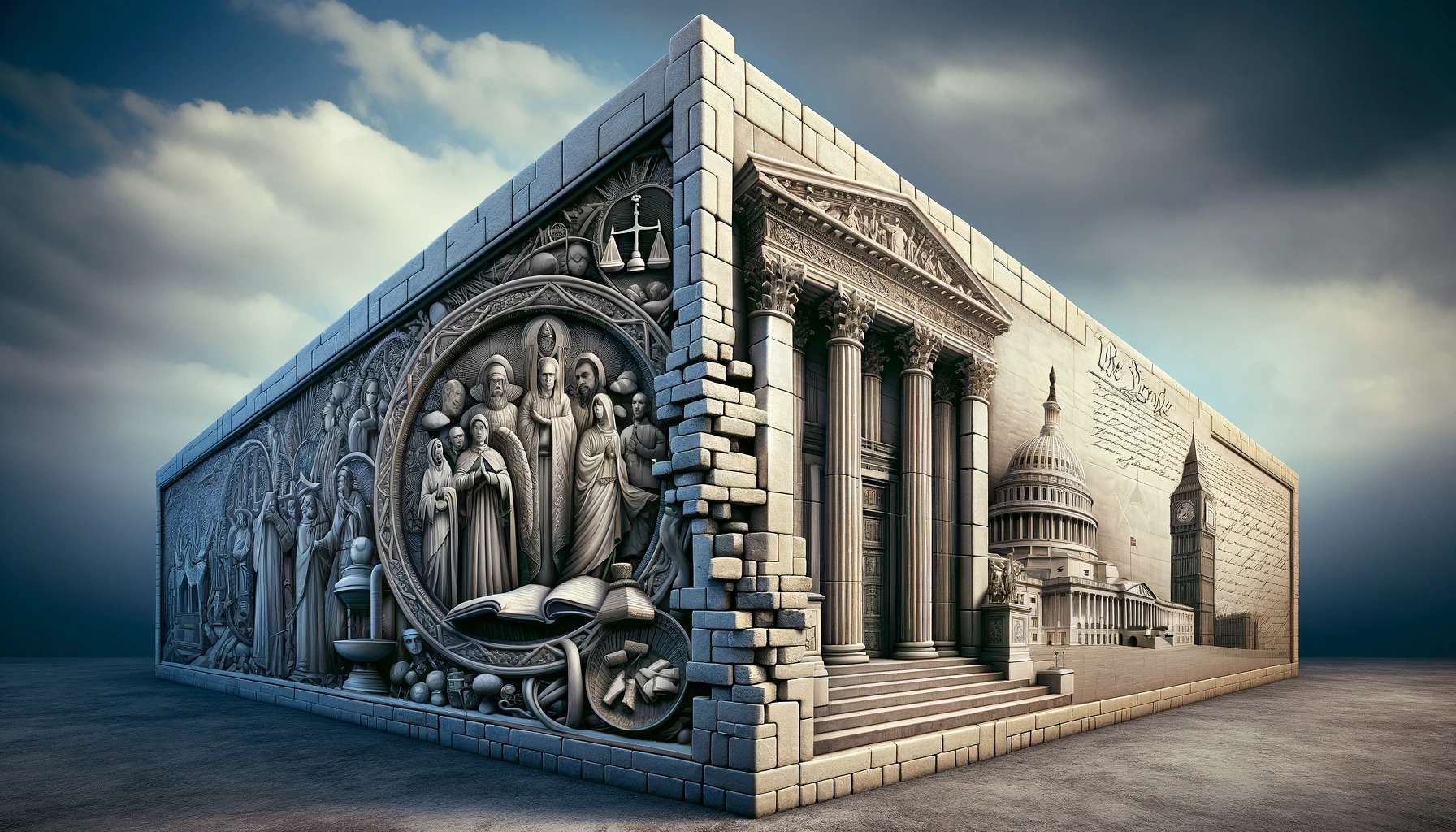

Theology and Spirituality
Wall Of Separation Between Church And State Who
Published: February 11, 2024
Peter Smith, Editorial Director at Christian.net, combines deep insights into faith, politics, and culture to lead content creation that resonates widely. Awarded for his contributions to religious discourse, he previously headed a major organization for religious communicators, enhancing dialogue on faith's societal impacts.
Discover the significance of the wall of separation between church and state in theology and spirituality. Explore its impact and relevance today.
(Many of the links in this article redirect to a specific reviewed product. Your purchase of these products through affiliate links helps to generate commission for Christian.net, at no extra cost. Learn more)
Table of Contents
Introduction
The concept of the "wall of separation between church and state" has been a cornerstone of the American legal and political landscape for centuries. This metaphor, coined by Thomas Jefferson in his 1802 letter to the Danbury Baptist Association, has become a powerful symbol of the need to maintain a distinct boundary between religious institutions and governmental entities. The phrase has sparked intense debates, legal battles, and profound reflections on the nature of religious freedom and the role of government in regulating religious matters.
The wall of separation serves as a fundamental principle in understanding the relationship between religion and governance in the United States. It embodies the idea that the state should not interfere with religious practices, nor should it favor or promote any particular religious belief. Conversely, it also signifies that religious institutions should not wield direct political power or influence government policies.
This concept has profound implications for the American society, shaping the legal framework, public discourse, and cultural norms. It has been a source of inspiration for advocates of religious freedom and a rallying cry for those seeking to uphold the secular nature of the government. At the same time, it has sparked controversy and contention, with differing interpretations and applications in various contexts.
The wall of separation between church and state stands as a testament to the complex and evolving relationship between religion and governance in the United States. It reflects the enduring tension between the principles of religious liberty and the need to prevent the establishment of a state religion. As we delve into the historical background, legal interpretations, and contemporary debates surrounding this concept, we gain a deeper understanding of its significance and the ongoing challenges in maintaining this delicate balance.
Historical Background
The historical roots of the "wall of separation between church and state" can be traced back to the early days of American colonization and the subsequent quest for religious freedom. The framers of the United States Constitution were deeply influenced by the historical experiences of religious persecution and the need to safeguard individual liberties from the encroachment of state-sponsored religion.
The concept of separating religious institutions from governmental authority was informed by the European history of religious conflicts and the desire to establish a society where individuals could freely practice their faith without fear of persecution or coercion. The framers sought to create a system that would prevent the government from imposing religious beliefs on its citizens while also ensuring that religious institutions did not wield undue influence over public policy.
The historical backdrop of the wall of separation is also intertwined with the writings and philosophies of influential thinkers such as John Locke and Thomas Paine, who advocated for the separation of church and state as a means to protect individual conscience and prevent the consolidation of power in the hands of religious hierarchies.
Furthermore, the First Amendment to the United States Constitution, ratified in 1791, played a pivotal role in solidifying the principle of separation between church and state. The Establishment Clause of the First Amendment explicitly prohibits the government from establishing an official religion or favoring one religion over others. This foundational legal provision laid the groundwork for the development of the wall of separation as a guiding principle in American jurisprudence.
The historical evolution of the wall of separation has been shaped by landmark events such as the Virginia Statute for Religious Freedom, authored by Thomas Jefferson in 1786, which articulated the principle of religious freedom and disestablishment of state-sponsored religion. Additionally, Jefferson's aforementioned letter to the Danbury Baptist Association in 1802, where he employed the metaphor of a "wall of separation," further cemented the concept as a defining feature of the American approach to religious liberty and governance.
In essence, the historical background of the wall of separation between church and state reflects a profound commitment to safeguarding religious freedom and ensuring that the government remains neutral in matters of faith. This historical trajectory has laid the groundwork for the legal and philosophical underpinnings of the ongoing discourse surrounding the relationship between religion and governance in the United States.
The Founding Fathers and the Establishment Clause
The Founding Fathers of the United States played a pivotal role in shaping the principles that underpin the relationship between religion and governance, particularly through the drafting and ratification of the Establishment Clause. This foundational provision, enshrined in the First Amendment to the United States Constitution, states that "Congress shall make no law respecting an establishment of religion, or prohibiting the free exercise thereof." The intent behind this clause was to prevent the government from endorsing or promoting a specific religious denomination and to ensure that individuals had the freedom to practice their faith without interference from the state.
The framers of the Constitution, drawing from their experiences and philosophical influences, sought to establish a system that would safeguard religious liberty and prevent the imposition of a state-sponsored religion. James Madison, often referred to as the "Father of the Constitution," played a central role in articulating the principles of religious freedom and the need to maintain a clear separation between religious institutions and governmental authority. Madison's advocacy for religious liberty and his commitment to preventing the establishment of a national religion were instrumental in shaping the language and intent of the Establishment Clause.
Furthermore, Thomas Jefferson's contributions to the concept of religious freedom and the separation of church and state were profound. His authorship of the Virginia Statute for Religious Freedom, which served as a precursor to the Establishment Clause, emphasized the importance of disentangling religious institutions from government control. Jefferson's correspondence with the Danbury Baptist Association, where he famously employed the metaphor of a "wall of separation," further underscored the Founding Fathers' commitment to maintaining a distinct boundary between religious affairs and state authority.
The Founding Fathers' emphasis on the Establishment Clause reflected a deep-seated belief in the importance of preserving individual conscience and preventing the coercive influence of the state in matters of faith. Their vision was rooted in the recognition that religious diversity and freedom of belief were essential components of a just and equitable society. By enshrining the Establishment Clause in the First Amendment, the Founding Fathers laid the groundwork for a legal framework that would uphold the principle of religious neutrality and protect the rights of individuals to worship according to their own convictions.
In essence, the Founding Fathers' advocacy for the Establishment Clause exemplified their commitment to creating a society where religious pluralism could thrive without government interference or favoritism. Their foresight and dedication to safeguarding religious freedom have had a lasting impact on the interpretation and application of the wall of separation between church and state in the United States.
Supreme Court Cases and Interpretations
The interpretation and application of the wall of separation between church and state have been profoundly shaped by landmark Supreme Court cases that have set legal precedents and clarified the boundaries of religious freedom and government involvement in religious matters. These cases have played a pivotal role in defining the parameters of the Establishment Clause and the Free Exercise Clause, both of which are integral to understanding the relationship between religion and governance in the United States.
One of the most influential cases in this realm is Everson v. Board of Education (1947), in which the Supreme Court articulated a broad interpretation of the Establishment Clause. The Court ruled that the Clause not only prohibited the establishment of a state religion but also encompassed the principle of separation of church and state. This decision laid the groundwork for subsequent cases that addressed the constitutionality of various forms of government support for religious activities.
Another significant case, Lemon v. Kurtzman (1971), introduced the Lemon test, which established a three-pronged standard for evaluating the constitutionality of laws or government actions concerning religion. The test stipulates that a statute must have a secular legislative purpose, must not have the primary effect of advancing or inhibiting religion, and must not result in excessive entanglement between government and religion. The Lemon test has been instrumental in guiding the Court's analysis of cases involving government aid to religious institutions and activities.
Furthermore, the Supreme Court's decision in Employment Division v. Smith (1990) addressed the scope of the Free Exercise Clause, establishing that neutral and generally applicable laws could be applied to religious practices without violating the First Amendment. This decision had significant implications for the balance between religious freedom and government regulation, shaping the legal landscape surrounding religious exemptions from generally applicable laws.
Additionally, cases such as Engel v. Vitale (1962), which prohibited state-sponsored prayer in public schools, and Lee v. Weisman (1992), which ruled against clergy-led prayer at public school graduation ceremonies, underscored the Court's commitment to upholding the separation of church and state in the context of public education.
These landmark Supreme Court cases and their interpretations have provided crucial guidance on the application of the wall of separation between church and state, shaping the legal framework governing religious freedom and government neutrality in matters of faith. The Court's rulings have contributed to the ongoing dialogue and legal precedents that continue to define the intricate balance between religious liberty and the constraints on government involvement in religious affairs.
Current Debates and Controversies
The concept of the wall of separation between church and state continues to be the subject of intense debates and controversies in contemporary American society. One of the central points of contention revolves around the intersection of religious freedom and anti-discrimination laws, particularly in the context of businesses and service providers. Debates have arisen regarding the extent to which business owners can invoke religious beliefs to justify refusing services to certain individuals or groups, such as same-sex couples seeking wedding-related services. This has sparked legal battles and public discourse on the delicate balance between religious convictions and anti-discrimination principles.
Moreover, the role of religion in public education remains a contentious issue. Debates persist over the permissibility of religious expressions and activities in public schools, including prayer, religious clubs, and the teaching of creationism alongside evolution in science curricula. These discussions reflect the ongoing struggle to uphold the principles of religious neutrality while respecting the rights of students to express their faith within the public education system.
The display of religious symbols and monuments on public property has also been a source of controversy. Disputes have arisen over the placement of religious displays, such as the Ten Commandments or nativity scenes, on government-owned land, with arguments centering on whether such displays constitute government endorsement of a particular religion. These debates underscore the complexities of navigating the boundaries between religious expression and state endorsement within the public sphere.
Furthermore, the issue of government funding for religious institutions and activities continues to fuel debates. Questions regarding the constitutionality of public funding for religious schools, social services provided by religious organizations, and the display of religious symbols using public funds have prompted legal challenges and public disagreements over the proper allocation of taxpayer resources in relation to religious entities.
The ongoing debates and controversies surrounding the wall of separation between church and state reflect the evolving dynamics of religious freedom, government neutrality, and the rights of individuals in a diverse and pluralistic society. As these discussions unfold, they underscore the enduring relevance and complexity of the principles enshrined in the Establishment Clause and the Free Exercise Clause, serving as a testament to the ongoing challenges in navigating the intersection of religion and governance in the United States.
The Future of the Wall of Separation Between Church and State
The future of the wall of separation between church and state in the United States is poised to be shaped by evolving societal dynamics, legal interpretations, and cultural shifts. As the nation grapples with an increasingly diverse religious landscape and complex social issues, the application and preservation of this foundational principle will continue to be a subject of profound significance and ongoing debate.
One of the key factors influencing the future of the wall of separation is the evolving religious demographics within the United States. The country is experiencing a notable rise in religious diversity, with a growing number of individuals identifying with non-traditional or minority faith traditions. This demographic shift presents unique challenges and opportunities in navigating the intersection of religious practices and government policies while upholding the principles of religious neutrality and inclusivity.
Furthermore, the ongoing evolution of technology and media platforms has transformed the landscape of public discourse and religious expression. The digital age has facilitated new avenues for religious advocacy and engagement, raising questions about the boundaries of religious freedom in online spaces and the implications for the separation of church and state in the virtual realm. As technology continues to reshape the dynamics of public communication and religious participation, the future of the wall of separation will undoubtedly be influenced by these digital developments.
Moreover, the role of the judiciary in interpreting and applying the principles of religious freedom and government neutrality will continue to shape the future trajectory of the wall of separation. As new legal challenges emerge and societal norms evolve, the Supreme Court and lower courts will be called upon to navigate complex issues related to religious accommodations, public expressions of faith, and the boundaries of government involvement in religious affairs. The outcomes of these legal deliberations will play a pivotal role in defining the contours of the wall of separation in the years to come.
In addition, the ongoing dialogue surrounding the relationship between religion and public policy, particularly in areas such as healthcare, education, and social services, will influence the future application of the wall of separation. Debates over issues such as reproductive rights, LGBTQ+ rights, and the provision of public funds to religious institutions will continue to test the boundaries of religious freedom and government entanglement in matters of faith.
As the United States navigates these complex and multifaceted dynamics, the future of the wall of separation between church and state will be shaped by a delicate balance of legal precedents, societal norms, and evolving interpretations of religious liberty. The ongoing commitment to upholding the principles of religious neutrality and individual conscience, while respecting the diverse tapestry of religious beliefs within the nation, will be instrumental in charting the course for the future of this foundational concept.
